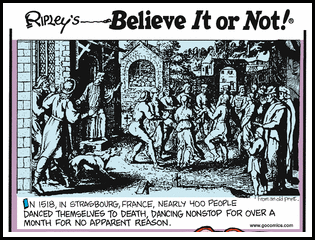I received this in an e-mail from one of my husband's cousins in Texas. I thought y'all might enjoy the history too.

An Article by Calvin E. Johnson, Jr.
Remembering Jefferson Davis: American Patriot & Southern Hero
May 23, 2009
Let’s not forget Monday May 25th is Memorial Day!!
Once upon a time, school children were taught about great Americans like Jefferson Davis whose 201st birthday is June 3rd.
The statue of Jefferson Davis and his two sons, Joe and Jim Limber, is nearing completion and will be placed at Beauvoir, the last home of the Confederate President, on Mississippi’s Gulf Coast. Jim was the Davis’ adopted black son. Read more about this
Sons of Confederate Veterans Project.
On Sunday, May 28, 1893, a few days before "Memorial Day", in New Orleans, a story began that overshadowed all other events.
This was the day when the remains of Jefferson Davis, former president of the Confederate States of America, was taken to Richmond, Virginia for final burial.
Jefferson Davis died in 1889 and over 200,000 people witnessed his temporary burial at Metairie Cemetery in New Orleans. Four years later on a rainy Saturday, on May 27, 1893, the remains of Jefferson Davis was removed and taken to Confederate Memorial Hall in New Orleans.
At 4:30PM, May 28th, a funeral service was held for Mr. Davis and a moving memorial address was delivered by Louisiana's Governor Murphy J. Foster as thousands listened. A reverent silence fell among the people as the casket was given to the commitment of veterans from Virginia.
The procession then formed for a slow march to the railroad station on Canal Street.
Train No. 69, with Engineer Frank Coffin, waited patiently as the casket was taken to the platform and passed through an open observation car to a catafalque.
Train engine No. 69, of the Louisville and Nashville Railroad slowly pulled out of New Orleans Station at 7:50PM for the 1,200 mile trip.
After a brief stop at Bay Saint Louis, and a slow-down at Pass Christian, where hundreds of people lined the tracks, the Jefferson Davis Funeral Train stopped at Gulfport, Mississippi, near Beauvoir the Southern president’s last home.
Uncle Bob Brown, a former servant of the Davis family and a passenger on the train, saw the many flowers that the children had laid on the side of the railroad tracks. Brown was so moved by this beautiful gesture that he wept uncontrollably.
In Mobile, Alabama, the train was met by a thousand mourners and the Alabama Artillery fired a 21-gun salute. Locomotive No. 69 was retired and Locomotive No. 25 was coupled to the train. The new train's Engineer was C.C. Devinney and Warren Robinson was its fireman.
The Atlanta Journal reported, quote, "The Cradle of the Confederacy is ablaze with life and light tonight. Everything is ready for honoring the memory of Jefferson Davis. Tomorrow morning with the rising of the sun the funeral train from New Orleans will reach Montgomery.” unquote.
Church bells rang in Montgomery, Alabama when the train pulled into the city at 6:00AM on May 29th. A severe rainstorm delayed the funeral procession to about 8:30AM when a caisson carried the body of Davis to Alabama's state capitol. A procession carried the casket through the portico where Jefferson Davis, in 1861, had taken the oath of office as President of the Confederacy.
The casket was placed in front of the bench of the Alabama Supreme Court. Above the right exit was a banner with the word "Monterrey" and above the left exit was a banner with the words "Buena Vista." During the War with Mexico Jefferson Davis was a hero at Monterrey and wounded at Buena Vista.
At 12:20PM the funeral train departed over the Western Railway of Alabama and Atlanta and West Point Railroad for Atlanta.
At 4:30PM the funeral train pulled into Union Station in Atlanta, Georgia. It is estimated that 20,000 people lined the streets as the funeral procession made their way to the state capitol. When Davis’ body lay in state at the Capitol, it was guarded by Atlanta’s Gate City Guard which had served as Company F, 1st Georgia (Ramsay’s).
At 7:00PM the train went north on the Richmond and Danville Railroad. The train traveled through Lula, Georgia, Greenville, South Carolina and stopped at the North Carolina capitol at Raleigh.
A brief stop was made in Danville, Virginia where a crowd of people gathered around the train and sang, "Nearer My God To Thee" as city church bells toiled.
Finally, the train reached Richmond, Virginia on Wednesday, May 31, 1893, at 3:00AM. It was Memorial Day. The casket was taken to the Virginia State House.
At 3:00PM, May 31st, the funeral procession started for Hollywood Cemetery.
With Mrs. Jefferson Davis were her daughters, Winnie and Margaret. Six state governors acted as pallbearers. It was estimated that 75,000 people attended this final salute to President Davis. The ceremony concluded with a 21-gun salute and "Taps."
Link
There is a memorial to Jefferson Davis and the Confederacy here outside of Irwinville, Georgia:
Jefferson Davis Memorial Historic Site. We visited the site after moving to Georgia. It is well worth the visit.




















